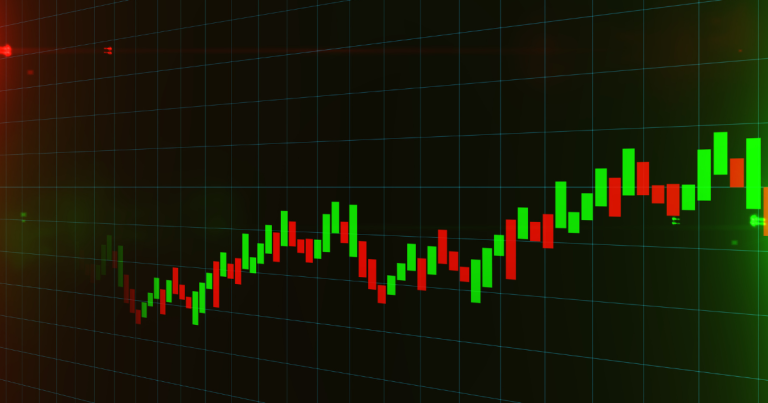
Getting the Hang of MACD
What’s MACD All About?
The Moving Average Convergence Divergence (MACD) indicator is a handy tool for spotting trends in financial markets. Unlike other indicators that scream “overbought” or “oversold,” MACD zeroes in on the relationship between two moving averages of a stock’s price. This helps traders get a grip on the trend’s strength and direction (Fidelity).
MACD has two lines that wiggle around without any limits. These lines come from exponential moving averages (EMAs), which are quicker to react to price changes than simple moving averages (SMAs). When these lines interact, they give off trading signals, much like a dual moving average system, helping traders make smarter moves (Fairmont Equities).
Why Bother with MACD?
MACD’s main job is to show changes in a trend’s strength, direction, momentum, and duration. By looking at how the two EMAs come together and move apart, traders can get a better sense of market movements. Here’s a breakdown of how MACD works:
MACD Line: This line is the result of subtracting the 26-period EMA from the 12-period EMA. It moves around the zero line, showing the trend’s direction. If the MACD line is above zero, it’s a bullish trend; below zero, it’s bearish.
Signal Line: This is a 9-period EMA of the MACD line. It smooths out the MACD line and gives buy or sell signals based on crossovers. A bullish signal happens when the MACD line crosses above the signal line, and a bearish signal occurs when it crosses below (Fidelity).
Histogram: The difference between the MACD line and the signal line is shown as a histogram, giving a visual clue of the momentum. Positive values mean growing bullish momentum, while negative values indicate growing bearish momentum.
| Component | Calculation | Purpose |
|---|---|---|
| MACD Line | 12-period EMA – 26-period EMA | Shows trend direction |
| Signal Line | 9-period EMA of MACD Line | Gives buy/sell signals |
| Histogram | MACD Line – Signal Line | Visual clue of momentum |
MACD is a flexible tool that fits into various moving average trading strategies. It’s great for spotting trend reversals and confirming ongoing trends. For more on different moving averages, check out our article on moving average types.
Mastering MACD can give traders an edge in the stock market. For more tips on using MACD, see our sections on MACD Strategies and Advanced MACD Techniques.
Calculating MACD
The Moving Average Convergence Divergence (MACD) is a go-to tool for traders looking to catch the direction of a stock trend. Knowing how to calculate the MACD can give you an edge in your trading game. You can calculate average stock price along with it.
Formula for MACD
The MACD is all about the difference between two Exponential Moving Averages (EMAs). You take the 12-period EMA and subtract the 26-period EMA. This difference is your MACD line. Then, you plot a 9-day EMA of the MACD line, known as the signal line, to spot buy and sell signals.
Here’s the basic formula:
MACD = EMA 12 – EMA 26And for the signal line:
Signal Line = EMA 9 ( MACD )EMA Calculation for MACD
Why use the Exponential Moving Average (EMA) instead of the Simple Moving Average (SMA)? The EMA gives more weight to recent prices, making it quicker to react to price changes (Fairmont Equities). Here’s how you calculate it:
EMA = ( Today’s Closing Price × K ) + ( Previous EMA × ( 1 – K ) )Where:
- ( K ) (Smoothing Factor) = ( \frac{2}{N+1} )
- ( N ) = Number of periods in the EMA
For example, to get the 12-period EMA:
K = 2 12+1 = 2 13 ≈ 0.1538And for the 26-period EMA:
K = 2 26+1 = 2 27 ≈ 0.0741These numbers are key for plotting the MACD and signal lines accurately.
| Period | EMA Smoothing Factor (K) |
|---|---|
| 12-period EMA | 0.1538 |
| 26-period EMA | 0.0741 |
| 9-period Signal Line EMA | 0.2 |
For more details on EMAs, check out our article on exponential moving average.
Getting a handle on these calculations lets you read MACD signals like a pro. Whether you’re diving into the exponential moving average crossover strategy or comparing the simple moving average vs exponential moving average, mastering the MACD is a game-changer for any trader.
Making Sense of MACD Signals
Getting a handle on the Moving Average Convergence Divergence (MACD) indicator can be a game-changer for traders. Knowing how to read bullish and bearish signals and using MACD in your trading game plan can seriously up your trading game.
Bullish and Bearish Signals
The MACD gives off signals when the MACD line crosses the signal line and when there’s a divergence between the MACD line and the asset’s price. These signals can hint at when to buy or sell (Capital.com).
Bullish Signals:
- When the MACD line crosses above the signal line, it’s a bullish signal. This might be your cue to buy.
- Another bullish sign is when the MACD line moves from below to above the zero line. This shows upward momentum, suggesting it’s time to go long.
Bearish Signals:
- On the flip side, when the MACD line crosses below the signal line, it’s a bearish signal. This might be the time to sell.
- A bearish signal also pops up when the MACD line crosses from above to below the zero line, indicating downward momentum and suggesting short positions.
Here’s a quick summary:
| Signal Type | Indicator | Action |
|---|---|---|
| Bullish | MACD crosses above signal line | Buy |
| Bullish | MACD crosses above zero line | Go long |
| Bearish | MACD crosses below signal line | Sell |
| Bearish | MACD crosses below zero line | Go short |
Using MACD for Trading
Traders use MACD to spot potential buy and sell moments. Two popular methods are the MACD crossover strategy and the zero-cross strategy.
MACD Crossover Strategy:
- Buy when the MACD moves above its nine-day EMA (signal line), signaling a bullish trend.
- Sell when the MACD dips below its nine-day EMA, signaling a bearish trend (Investopedia).
Zero-Cross Strategy with MACD:
- A bullish signal happens when the MACD crosses from below to above the zero line, suggesting long positions.
- A bearish signal occurs when the MACD crosses from above to below the zero line, suggesting short positions (Investopedia).
To get even better results, combine MACD with other indicators. For instance, using the volume weighted average price or looking at different time frames can give you more insights and improve your trading accuracy.
If you want to dive deeper, check out our article on moving average trading strategies for a full rundown of different trading approaches. Also, understanding the differences between simple moving average vs exponential moving average can help fine-tune your trading methods.
MACD Limitations
The Moving Average Convergence Divergence (MACD) indicator is a go-to tool for traders looking to spot momentum, gauge trend strength, and catch trend reversals (Capital.com). But, like any tool, it’s got its quirks and hiccups.
Drawbacks of MACD
Even though the MACD is a favorite, it’s not perfect. One big issue is its dependence on past price data, which can lead to delayed signals. Since it’s a momentum-based indicator, it might lag behind actual price movements, causing you to jump in or out of trades a bit too late.
Another problem is false signals. Sometimes, the MACD might hint at a trend reversal or momentum shift that never happens, leading to bad trading calls. This is especially annoying in choppy or sideways markets where price movements are all over the place.
Also, the MACD’s reliability can change with market conditions. In super volatile markets, the signals can get pretty erratic and less trustworthy. So, it’s smart to use the MACD alongside other indicators to confirm what you’re seeing. For more on mixing indicators, check out our article on moving average trading strategies.
| Drawback | Description |
|---|---|
| Lagging Indicator | Relies on past price data, causing delayed signals. |
| False Signals | Can suggest trend reversals that don’t happen, especially in choppy markets. |
| Market Condition Sensitivity | Reliability changes with market volatility. |
Cryptocurrency Market Considerations
Using the MACD in the crypto market brings its own set of headaches. Cryptos are known for their wild price swings, making traditional indicators like the MACD less reliable (BYDFi). The unpredictable nature of crypto can lead to more false signals and higher trading risks.
Another thing to consider is that crypto markets never sleep. Unlike stock markets with set trading hours, cryptos trade 24/7. This constant activity can add more noise to the price data, messing with the accuracy of MACD signals.
Plus, the MACD’s reliance on exponential moving averages (EMAs) might not always catch the subtle price movements in the crypto market. It might be worth looking into other moving average types or combining the MACD with tools like the volume weighted average price or weighted moving average for a better analysis.
| Consideration | Impact on MACD |
|---|---|
| High Volatility | More frequent false signals. |
| 24/7 Trading | More noise in price data. |
| EMA Reliance | Might miss subtle price movements in crypto. |
By knowing the MACD’s limitations and the quirks of the crypto market, you can make smarter decisions and build stronger trading strategies. For more tips on picking the right time frames for trading, check out our guide on time frame selection.
MACD Strategies
Getting the hang of the Moving Average Convergence Divergence (MACD) indicator can really up your trading game. Let’s break down two popular strategies: the MACD Crossover Strategy and the Zero-Cross Strategy with MACD.
MACD Crossover Strategy
The MACD Crossover Strategy is a favorite among traders. It involves the MACD line and its nine-day Exponential Moving Average (EMA), also known as the signal line. Here’s the lowdown:
- Bullish Signal: When the MACD line jumps above its nine-day EMA, it’s a green light for buying.
- Bearish Signal: When the MACD line dips below its nine-day EMA, it’s a red flag for selling.
Example Table for MACD Crossover Strategy
| Date | MACD Value | Signal Line Value | Action |
|---|---|---|---|
| 2023-10-01 | 1.25 | 1.15 | Buy |
| 2023-10-02 | 1.20 | 1.22 | Hold |
| 2023-10-03 | 1.10 | 1.18 | Sell |
Want more details? Check out our exponential moving average crossover strategy guide.
Zero-Cross Strategy with MACD
The Zero-Cross Strategy with MACD is another handy method for spotting trading signals. This one focuses on the MACD line crossing the zero line.
- Bullish Signal: When the MACD crosses from below to above the zero line, it’s a sign to go long.
- Bearish Signal: When the MACD crosses from above to below the zero line, it’s time to go short.
Example Table for Zero-Cross Strategy
| Date | MACD Value | Zero Line | Action |
|---|---|---|---|
| 2023-10-01 | -0.05 | 0 | Hold |
| 2023-10-02 | 0.02 | 0 | Buy (Long) |
| 2023-10-03 | -0.03 | 0 | Sell (Short) |
For more on this, dive into our moving average trading strategies articles.
Both strategies have their perks and can be combined with other technical indicators for better trading decisions. Knowing when to use these strategies can make a big difference in your trading results. For more info on different moving average types and how to use them, explore our resources.
Mastering MACD Tricks
Getting the hang of advanced MACD tricks can really up your trading game. Let’s break down two big ones: spotting divergence with MACD and reading the MACD histogram.
Spotting Divergence with MACD
Divergence with the MACD (Moving Average Convergence Divergence) happens when the price action and MACD momentum don’t match up. This can hint at possible reversals or trend continuations. For instance, if the price keeps making lower highs but the MACD histogram shows higher lows, it might be a sign of a coming drop (Investopedia).
Types of Divergence:
1. Bullish Divergence:
- Price makes lower lows, but MACD shows higher lows.
- Could mean an upward move is on the way.
2. Bearish Divergence:
- Price makes higher highs, but MACD shows lower highs.
- Could mean a downward move is coming.
| Type of Divergence | Price Action | MACD Action | What It Means |
|---|---|---|---|
| Bullish Divergence | Lower Lows | Higher Lows | Possible Uptrend |
| Bearish Divergence | Higher Highs | Lower Highs | Possible Downtrend |
Want more on using divergences in your trading? Check out our piece on moving average trading strategies.
Reading the MACD Histogram
The MACD histogram shows the gap between the MACD line and its nine-day EMA (Exponential Moving Average). It’s positive when the MACD is above its nine-day EMA and negative when it’s below. The zero line on the histogram is where momentum is neutral (Investopedia).
Key Points in Histogram Analysis:
1. Positive Histogram:
- Shows bullish momentum.
- Means the MACD line is above the signal line.
2. Negative Histogram:
- Shows bearish momentum.
- Means the MACD line is below the signal line.
3. Zero Line Cross:
- Histogram crossing above zero means a bullish crossover.
- Histogram crossing below zero means a bearish crossover.
| Histogram State | What It Means | MACD vs. Signal Line |
|---|---|---|
| Positive | Bullish Momentum | MACD > Signal Line |
| Negative | Bearish Momentum | MACD < Signal Line |
| Zero Line Cross | Momentum Shift | Cross Above (Bullish) / Cross Below (Bearish) |
Grasping the MACD histogram’s details can give traders better insights into market momentum and potential price moves. For more on different moving averages and their trading uses, check out our articles on exponential moving average crossover strategy and simple moving average vs exponential moving average.
By nailing these advanced MACD tricks, you’ll get a better handle on market dynamics and make smarter trading choices.








I’m not sure if I’m ready to use MACD yet, but this was a good starting point. I’ll definitely be coming back to this article as I learn more.
This is a very informative post Im still trying to wrap my head around the formula but I think Im starting to get it
so basically, macd helps you see if the price is trending up or down, right? i get it now, thanks for breaking it down!
This was a great intro to MACD! I’m a total newbie when it comes to trading but this helped a lot. Thanks!
i’ve been using macd for a while, and i’ve found it to be a really helpful indicator. this post was a good refresher, especially on the formula.